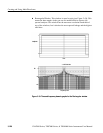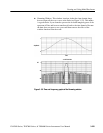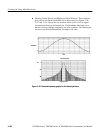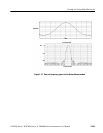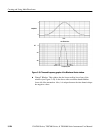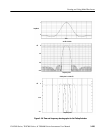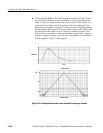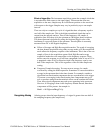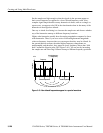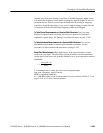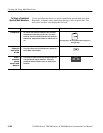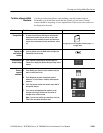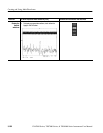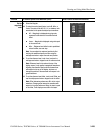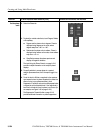
Creating and Using Math Waveforms
CSA7000 Series, TDS7000 Series, & TDS6000 Series Instruments User Manual
3- 227
Effects of trigger jitter. The instrument acquisition system has a sample clock that
is asynchronous with respect to the input signal. This means that from one
acquisition to the next, samples may be in a different position on the waveform
with respect to the trigger. Samples may vary in position by up to one sample
interval.
There are only two samples per cycle of a signal that have a frequency equal to
one half of the sample rate. This is the highest nonaliased signal that can be
output from the spectral analyzer. Thus, at this frequency, one sample of
acquisition jitter will show up in the spectrum as 180 degree phase variations.
The phase spectrum is dejittered by using the fractional trigger value of the
instrument to correct all phases in the spectrum. Therefor phase is accurately
measured from DC to the Nyquist frequency.
H Effects of Average and High Res acquisition modes. The result of averaging
the time domain acquisition using either average mode or Hi Res acquisition
mode affects the frequency response of the instrument. This is due to the one
sample of jitter in the acquisition system. Both High Res and average
acquisition modes have the same affect on the frequency response. These
modes cause the response to roll off from a magnitude value of one at DC to
a magnitude value of 0.63 at Nyquist which is the frequency equal to one
half of the sample rate. This is true regardless of the real time sample rate
setting.
H Frequency Domain Averaging. You may turn on average for a math
waveform by editing the math expression. Sometimes it is more desirable to
average in the spectrum then in the time domain. For example, consider a
signal that has time domain components that are asynchronous to the trigger.
If you turn on averaging in the time domain, these components may go to
zero or produce strange non-deterministic effects on the resultant waveform.
Thus, these signal components may end up not appearing in the spectrum.
However, if averaging is done in the frequency domain instead, then these
components will be present. An example is:
Math1 = AVG(SpectralMag(Ch1)).
Aliasing occurs when the input frequency of a signal is greater than one half of
the sampling frequency (the sample rate).
Recognizing Aliasing




